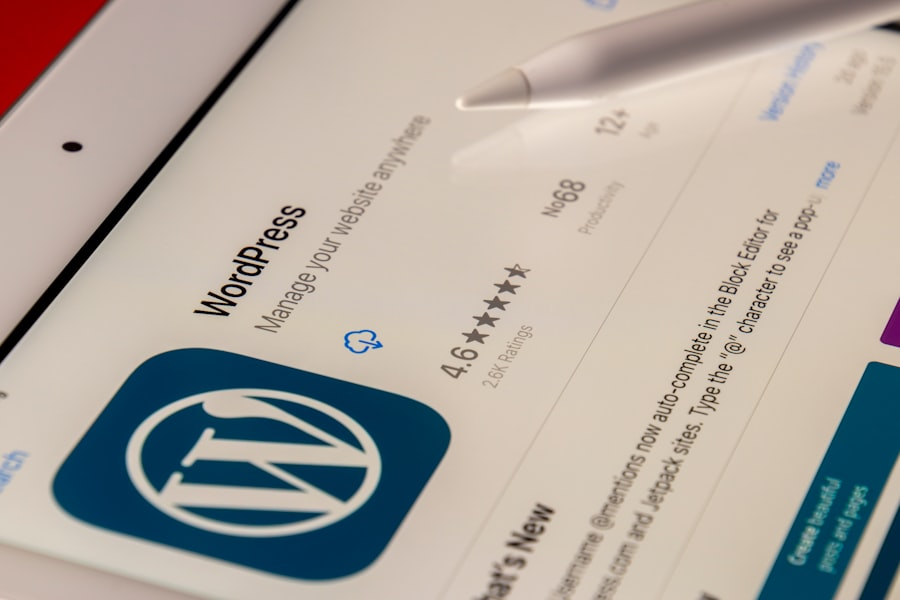As a WordPress developer, I have come to realize that the security of plugins is paramount in maintaining the integrity of a website. WordPress powers a significant portion of the internet, and with that popularity comes an increased risk of cyber threats. Each plugin I develop or install can potentially introduce vulnerabilities that hackers might exploit.
Therefore, understanding the importance of security in WordPress plugins is not just a best practice; it is a necessity. A single security breach can lead to data loss, compromised user information, and a tarnished reputation for both the website owner and the developer. Moreover, the consequences of neglecting security can be far-reaching.
I have seen firsthand how a compromised plugin can lead to unauthorized access, defacement of websites, or even complete shutdowns. This not only affects the website’s functionality but also its search engine ranking and user trust. By prioritizing security in my plugin development process, I am not only protecting my work but also safeguarding the users who rely on my plugins for their websites.
It is essential to foster a culture of security awareness among developers and users alike, ensuring that everyone understands the risks involved and the measures that can be taken to mitigate them.
Key Takeaways
- Security in WordPress plugins is crucial for protecting websites from potential threats and attacks.
- Common security vulnerabilities in WordPress plugins include SQL injection, cross-site scripting (XSS), and user authentication flaws.
- Best practices for secure code development in WordPress plugins include input validation, data sanitization, and using secure coding practices.
- Implementing user authentication and authorization in custom WordPress plugins is essential for controlling access to sensitive data and functionalities.
- Securing data storage and handling in custom WordPress plugins involves encrypting sensitive information and using secure data storage methods.
Identifying Common Security Vulnerabilities in WordPress Plugins
In my journey as a WordPress developer, I have encountered various security vulnerabilities that are commonly found in plugins. One of the most prevalent issues is inadequate input validation. Many plugins fail to properly sanitize user inputs, allowing malicious actors to inject harmful code or scripts.
This oversight can lead to severe consequences, including data breaches and unauthorized access to sensitive information. Recognizing this vulnerability has prompted me to implement rigorous input validation techniques in my own plugins, ensuring that all user inputs are thoroughly checked and sanitized before processing. Another common vulnerability I have observed is improper authentication and authorization mechanisms.
Some plugins do not adequately verify user identities or permissions, which can result in unauthorized users gaining access to restricted areas of a website. This lack of proper authentication can be particularly dangerous in plugins that handle sensitive data or administrative functions. To combat this issue, I have made it a priority to incorporate robust authentication protocols in my plugin development process, ensuring that only authorized users can access critical features and data.
Best Practices for Secure Code Development in WordPress Plugins

When it comes to secure code development for WordPress plugins, I have learned that following best practices is essential for minimizing vulnerabilities. One of the first steps I take is to adhere to the principle of least privilege. This means that I design my plugins to operate with the minimum level of access necessary to function correctly.
By limiting permissions, I reduce the potential impact of any security breach that may occur. Additionally, I make it a point to regularly review and update my code to ensure it aligns with the latest security standards and practices. Another best practice I have adopted is to utilize WordPress’s built-in security features whenever possible.
For instance, I leverage functions like `wp_nonce_field()` and `check_admin_referer()` to protect against CSRF (Cross-Site Request Forgery) attacks. These functions help ensure that requests made to my plugin are legitimate and originate from authenticated users. Furthermore, I prioritize using prepared statements for database queries to prevent SQL injection attacks.
By employing these techniques, I can significantly enhance the security posture of my plugins while also providing a better experience for users.
Implementing User Authentication and Authorization in Custom WordPress Plugins
User authentication and authorization are critical components of any secure WordPress plugin I develop. To ensure that only legitimate users can access specific functionalities, I implement robust authentication mechanisms. This often involves integrating WordPress’s built-in user management system, which allows me to leverage existing user roles and capabilities.
By doing so, I can create a seamless experience for users while maintaining strict control over who can access what within my plugin. In addition to authentication, I pay close attention to authorization processes. It is vital for me to define clear roles and permissions for different user types within my plugin.
For instance, an administrator may have full access to all features, while a subscriber may only be allowed limited interactions. By clearly delineating these roles, I can prevent unauthorized actions and protect sensitive data from being accessed or modified by users without the appropriate permissions. This layered approach to user management not only enhances security but also fosters trust among users who rely on my plugin for their website needs.
Securing Data Storage and Handling in Custom WordPress Plugins
Data storage and handling are crucial aspects of plugin development that require careful consideration. In my experience, one of the most effective ways to secure data is by using WordPress’s built-in database functions, such as `$wpdb->insert()`, `$wpdb->update()`, and `$wpdb->get_results()`. These functions automatically handle data sanitization and escaping, reducing the risk of SQL injection attacks.
By relying on these built-in methods, I can ensure that any data stored or retrieved from the database is handled securely. Additionally, I recognize the importance of encrypting sensitive data before storing it in the database. For example, if my plugin collects user information such as passwords or personal details, I make it a priority to encrypt this data using strong encryption algorithms.
This way, even if an attacker gains access to the database, they will not be able to read or misuse sensitive information without the proper decryption keys. Implementing these data handling practices not only protects user information but also enhances the overall security of my plugin.
Protecting Against Cross-Site Scripting (XSS) and SQL Injection Attacks

Cross-Site Scripting (XSS) and SQL injection attacks are two of the most common threats facing WordPress plugins today. To protect against XSS attacks, I ensure that all output generated by my plugin is properly escaped before being displayed on the front end. This includes using functions like `esc_html()`, `esc_attr()`, and `wp_kses()` to sanitize user-generated content before rendering it on web pages.
By taking these precautions, I can prevent malicious scripts from being executed in users’ browsers. In addition to XSS protection, I am vigilant about safeguarding my plugins against SQL injection attacks. As mentioned earlier, using prepared statements with parameterized queries is one of the most effective ways to mitigate this risk.
By separating SQL code from user input, I can prevent attackers from injecting harmful SQL commands into my database queries. Furthermore, I regularly review my code for any potential vulnerabilities and stay informed about emerging threats in the WordPress ecosystem. This proactive approach allows me to address potential weaknesses before they can be exploited.
Regular Security Audits and Updates for Custom WordPress Plugins
Conducting regular security audits is an essential practice that I have integrated into my plugin development routine. These audits involve systematically reviewing my code for vulnerabilities, outdated libraries, or any other potential security risks. By performing these checks on a consistent basis, I can identify and address issues before they become significant problems for users.
Additionally, I encourage other developers in the community to adopt similar practices as part of their development workflow. Updating my plugins regularly is another critical aspect of maintaining security. The WordPress ecosystem is constantly evolving, with new vulnerabilities being discovered and patched regularly.
By keeping my plugins up-to-date with the latest security patches and best practices, I can ensure that they remain secure against emerging threats. Moreover, I communicate these updates clearly to users so they understand the importance of keeping their installations current. This commitment to regular audits and updates not only enhances security but also builds trust with users who rely on my plugins.
Resources for Further Learning and Support in WordPress Plugin Security
As someone who is passionate about WordPress plugin development and security, I have found numerous resources invaluable for further learning and support in this area. The official WordPress Codex is an excellent starting point for understanding best practices and guidelines related to plugin development and security. Additionally, I often turn to online forums such as Stack Overflow and the WordPress Support Forum for community-driven insights and solutions to specific challenges I encounter.
Moreover, there are several dedicated blogs and websites focused on WordPress security that provide up-to-date information on vulnerabilities and best practices. Websites like WPBeginner and Sucuri offer valuable articles and tutorials that help me stay informed about the latest trends in WordPress security. Attending webinars or participating in online courses related to web security has also proven beneficial in expanding my knowledge base.
By leveraging these resources, I continuously enhance my skills as a developer while contributing to a more secure WordPress ecosystem for everyone involved.
When developing a secure custom WordPress plugin, it’s crucial to consider various aspects of website performance and security. A related article that can provide valuable insights is available on optimizing your website’s speed and performance, which is an essential factor in maintaining a secure and efficient WordPress site. You can read more about this in the article on Google PageSpeed Insights. This resource offers guidance on how to enhance your website’s loading times, which can complement your efforts in developing a secure plugin by ensuring that your site remains fast and responsive, ultimately contributing to a better user experience and improved security.
FAQs
What is a custom WordPress plugin?
A custom WordPress plugin is a piece of software that adds specific features or functionality to a WordPress website. It is created specifically for the needs of a particular website and is not available as a pre-built option in the WordPress plugin directory.
Why is it important to develop a secure custom WordPress plugin?
Developing a secure custom WordPress plugin is important to protect the website from potential security vulnerabilities. A secure plugin helps prevent unauthorized access, data breaches, and other security threats that could compromise the website and its users.
What are some best practices for developing a secure custom WordPress plugin?
Some best practices for developing a secure custom WordPress plugin include following WordPress coding standards, using secure coding practices, sanitizing and validating user input, implementing proper authentication and authorization mechanisms, and regularly updating the plugin to address any security issues.
How can I ensure the security of a custom WordPress plugin?
You can ensure the security of a custom WordPress plugin by conducting thorough security testing, using secure coding practices, staying informed about the latest security threats and best practices, and regularly updating the plugin to address any security vulnerabilities.
What are some common security vulnerabilities in custom WordPress plugins?
Some common security vulnerabilities in custom WordPress plugins include SQL injection, cross-site scripting (XSS), cross-site request forgery (CSRF), insecure file uploads, and inadequate access controls. It is important to address these vulnerabilities during the development process.
